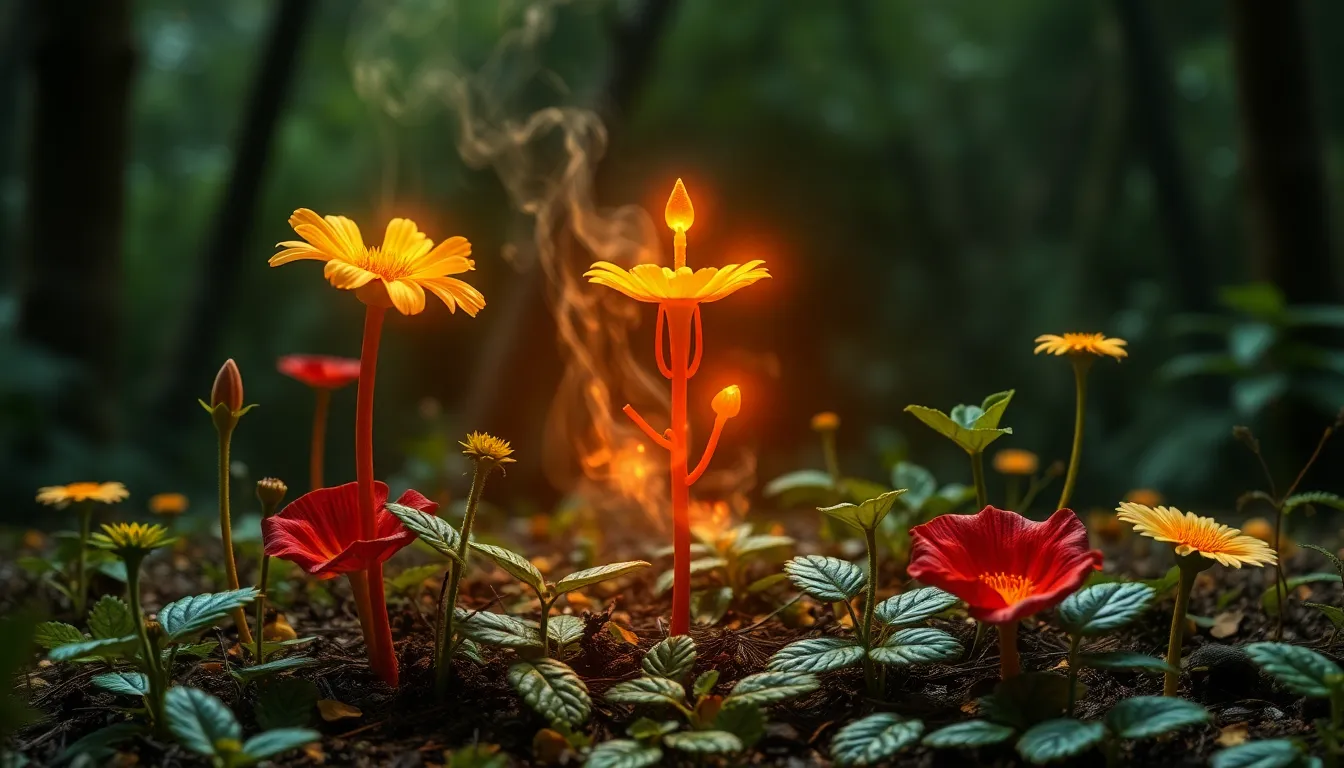The Science Behind the Myths: What Plants Can Really Do
Introduction: The Fascination with Plant Myths
Throughout history, plants have captivated human imagination, leading to a plethora of myths and beliefs about their abilities and functions. From ancient herbal remedies to modern houseplants, the fascination with plants is deeply rooted in culture and tradition. However, as we delve deeper into the realm of plant science, it becomes essential to separate fact from fiction. This article explores some common myths surrounding plants, examining the science behind what they can really do.
Myth 1: Plants Can Communicate with Each Other
One of the most intriguing claims about plants is their ability to communicate. While it’s true that plants can send signals to each other, the mechanisms are quite different from animal communication.
- Root Exudates: Plants release chemical compounds through their roots into the soil. These compounds can attract beneficial microbes or warn neighboring plants of threats.
- Volatile Organic Compounds (VOCs): When under attack by pests, certain plants emit VOCs that can signal nearby plants to ramp up their defenses.
Research indicates that while plants do have complex signaling systems, it doesn’t equate to communication as seen in the animal kingdom; rather, it’s a survival mechanism deeply embedded in their biology.
Myth 2: Certain Plants Can Improve Indoor Air Quality Significantly
Many people believe that having houseplants can dramatically improve indoor air quality. While it’s true that plants can absorb certain pollutants, the extent of their effectiveness is often overstated.
- Studies Reviewed: Research has shown that while plants can remove toxins like formaldehyde and benzene, the rate of absorption is minimal compared to the volume of air in a room.
- Limitations: A few plants may help reduce indoor air pollutants, but they are not a substitute for proper ventilation and air filtration systems.
In summary, while plants contribute positively to our environment, their impact on air quality in indoor spaces is limited.
Myth 3: All Plants Are Toxic to Pets and Humans
The belief that all plants pose a danger to pets and humans is unfounded. While some plants are indeed toxic, many are completely safe and can even be beneficial.
- Exploration of Toxicity: Plant toxicity varies significantly; some common houseplants like pothos and philodendron can be harmful, while others like spider plants and Boston ferns are non-toxic.
- Highlighting Non-Toxic Plants:
- Spider Plant (Chlorophytum comosum)
- Bamboo Palm (Chamaedorea seifrizii)
- Areca Palm (Dypsis lutescens)
It is essential for pet owners and parents to research plant safety to ensure a healthy environment.
Myth 4: Plants Have Memory and Can Remember Past Experiences
The idea that plants can remember past experiences is a fascinating concept, but scientifically, it requires clarification.
- Plant Behavior: Some plants exhibit memory-like responses to environmental changes, adjusting their growth patterns based on past stimuli.
- Research on Adaptations: Studies indicate that plants can adapt to stress based on previous experiences, but this is not memory in the human sense.
Plants do respond to their environment in complex ways, but attributing memory to them may be misleading.
Myth 5: More Plant Species Equates to Better Ecosystems
The assumption that greater biodiversity always leads to healthier ecosystems is a simplification of ecological dynamics.
- Biodiversity Understanding: While biodiversity is crucial for resilience and function, the presence of invasive species can disrupt native ecosystems.
- Role of Native Species: Native plants typically support local wildlife and maintain ecological balance better than non-native species.
It’s important to recognize that both the quantity and quality of plant species contribute to ecosystem health.
Myth 6: Plants Can Feel Pain and Suffering Like Animals
The notion that plants can feel pain is a common misconception. While plants can respond to stimuli, their responses are fundamentally different from animal pain perception.
- Science of Perception: Plants can sense environmental changes and may react defensively, but this is a biological response, not an emotional one.
- Differentiating Responses: Unlike animals, plants lack a nervous system and brain, making the concept of ‘feeling’ in a human sense irrelevant.
Understanding plant responses helps us appreciate their resilience without attributing human emotions to them.
Myth 7: Herbal Remedies Are Always Safe and Effective
Herbal remedies are often regarded as natural and therefore safe, but this is a misconception. The efficacy and safety of herbal treatments can vary significantly.
- Investigation into Efficacy: Some herbs have proven benefits, while others lack scientific backing or can cause adverse reactions.
- Importance of Validation: Scientific validation is crucial in determining the effectiveness of herbal remedies, as well as understanding appropriate dosages.
Consumers should exercise caution and consult healthcare professionals when considering herbal treatments.
The Role of Plants in Climate Change Mitigation
Plants play a pivotal role in combating climate change through carbon sequestration and other ecological functions.
- Evidence of Impact: Forests and other vegetation absorb significant amounts of carbon dioxide, helping to mitigate greenhouse gas effects.
- Reforestation Efforts: Initiatives aimed at reforesting degraded areas demonstrate the potential for plants to restore ecosystems and enhance biodiversity.
Integrating sustainable practices in agriculture and forestry can further amplify the benefits plants provide in climate change mitigation.
Conclusion: Embracing Scientific Understanding of Plants
In conclusion, understanding the science behind plant functions is essential to debunking myths and fostering an appreciation for the natural world. While plants possess remarkable abilities, it is crucial to acknowledge their limitations. By embracing scientific research, we can cultivate a balanced view of the benefits and roles that plants play in our lives, ultimately enhancing our relationship with nature.




